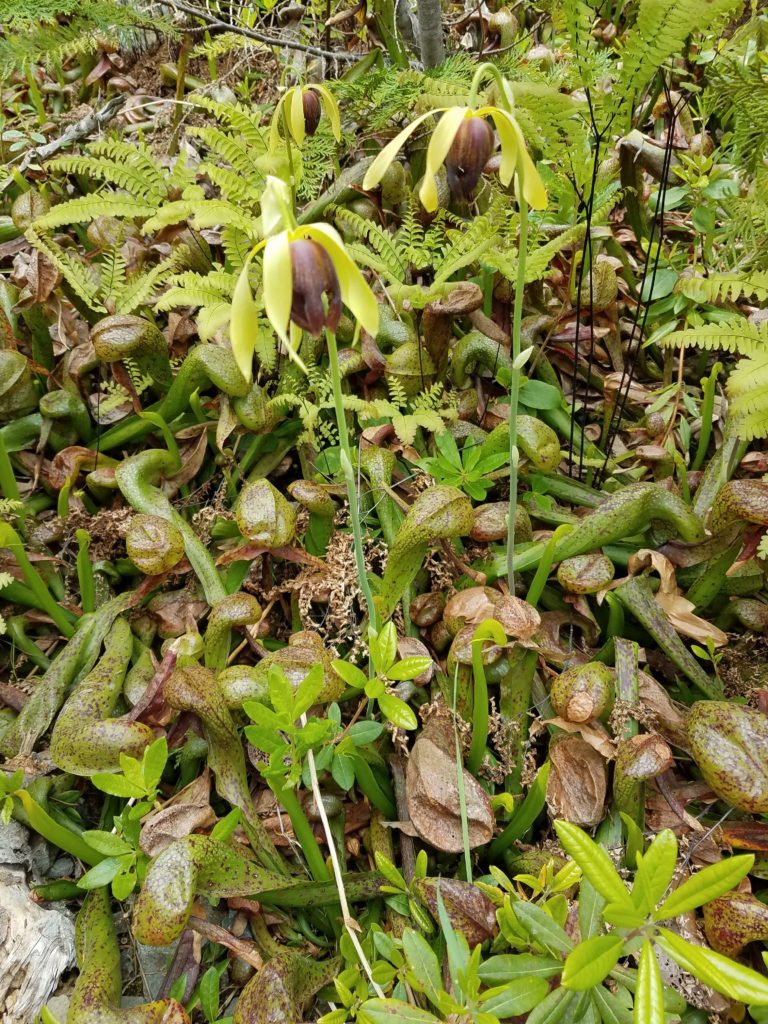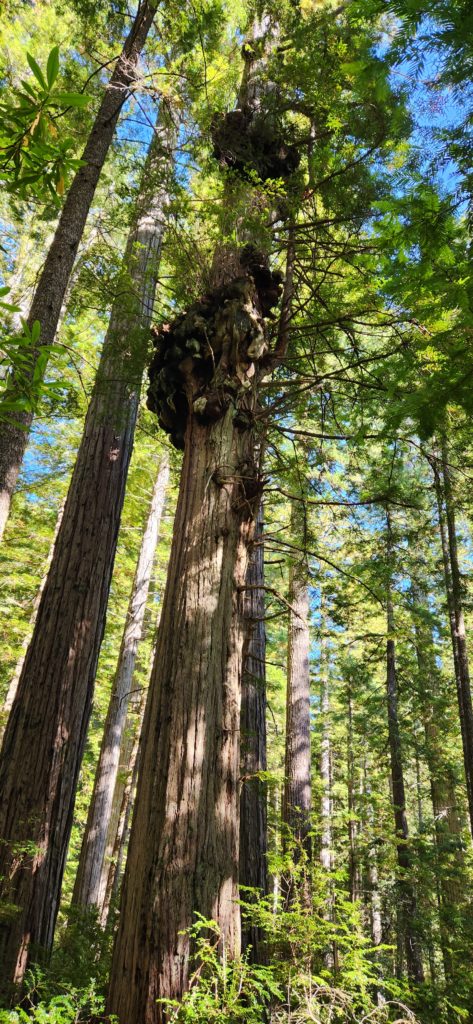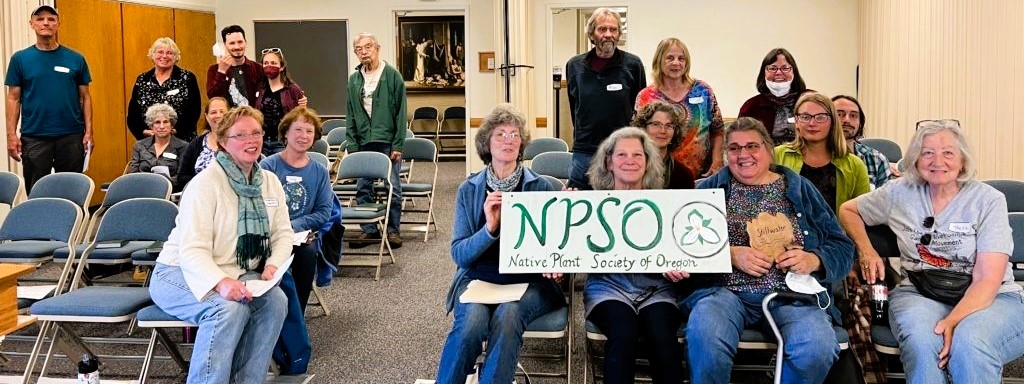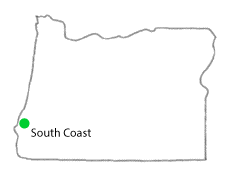South Coast Chapter
Members of the South Coast Chapter seemingly have it all, including windswept grassy and forested headlands, sandy and rocky beaches, broad dunes and interdunal wetlands, grand forests and shrublands, estuaries and river bars, and unusual serpentine balds. The Coos and Curry County region encompasses not only the meeting of land and sea, but also the northern extent of the California Floristic Province where the Klamath Mountains encounter the Oregon Coast Range.
While the mountains harbor hidden treasures, much of the area’s botanical diversity is surprisingly accessible from public trails along Highway 101. Within a few miles, one can explore the southernmost bog blueberry (Vaccinium uliginosum) bogs and the northernmost patches of California coastal prairie; the latter of which may host the endemic Ornduff’s goldfields (Lasthenia ornduffii). Another well-known endemic in the region is sand dune phacelia (Phacelia argentea), a distinctive silvery cushion of a plant that grows only on open and freely moving sand habitats. This and several other species that utilize these habitats are threatened by invasive grasses and shrubs that are stabilizing the dunes and reduce available habitat for the species. ORV activities also potentially impact these species and their habitats.
The South Coast Chapter offers educational presentations during winter, hikes from spring to fall, and occasional garden tours. Members often table local events to answer questions, provide educational materials, and sometimes offer free native plants to the public. The chapter also partners with other organizations during local restoration events such as weed pulls and native plantings.
For questions or information on upcoming events, contact sc**********@*******on.org.
Upcoming Chapter Events:
Central Coast Dunes
Central Coast Dunes - Dina Pavlis Sunday May 25, 2025 ⋅ 8am – 12pm (Pacific Time - Los Angeles) The Oregon Dunes National Recreation Area is one of the largest...




